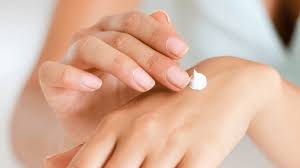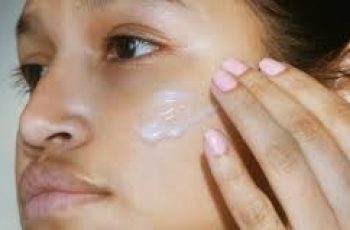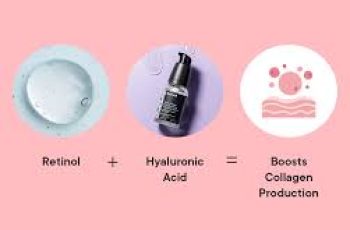
Can I Use Hyaluronic Acid on My Arms and Legs?
Ever since hyaluronic acid became a staple in our daily skincare routines, we’ve all been a little obsessed. And honestly, who could blame us?
This powerhouse ingredient is known for its deep hydration, plumping effects, and gentle nature—it’s like a tall glass of water for your skin.
But if you’ve only been using hyaluronic acid (HA) on your face, you might be missing out.
So here’s the question we’re answering today:
Can you use hyaluronic acid on your arms and legs?
Spoiler alert—yes, and the benefits may surprise you.
What Is Hyaluronic Acid?
Let’s take a quick refresher on what hyaluronic acid actually is.
Hyaluronic acid is a naturally occurring molecule in the body—found mostly in the skin, joints, and eyes.
In skincare, it’s prized for being a humectant, which means it pulls moisture from the environment into your skin.
It can hold up to 1,000 times its weight in water, making it one of the most hydrating ingredients you can apply topically.
It’s typically derived from sugar or fermented plants, and it’s found in a wide variety of skincare products—from face serums to body lotions.
Can You Use Hyaluronic Acid on Your Body?
Yes, absolutely. Hyaluronic acid isn’t just for the face. It works beautifully on the arms, legs, hands, and body—especially areas that are prone to dryness or environmental stress.
Many body lotions, creams, and gels now include HA as a key ingredient for long-lasting hydration.
Why You Should Use HA on the Body
Rehydrates dry areas like knees, elbows, arms, and shins
Soothes sunburned or wind-chapped skin
Plumps and softens rough texture
Helps reduce body fine lines and crepey skin
Restores comfort to tight or itchy skin
So, if you’re planning a sunny holiday or battling dry winter weather, pack a body gel enriched with hyaluronic acid—you’ll thank yourself later.
Can You Use Hyaluronic Acid on Your Arms and Legs?
Definitely. In fact, the arms and legs often need hydration the most, especially during cold weather or after shaving.
Here’s what HA can do for these areas:
On Arms
Relieves dry, itchy patches
Restores smooth texture
Prevents flakiness, especially around elbows
Soothes irritation after sun exposure or waxing
On Legs
Rehydrates skin after shaving or exfoliating
Prevents “alligator skin” from dryness
Helps improve the appearance of crepey skin or minor scarring
Boosts skin elasticity and softness
When paired with nourishing body oils or occlusive moisturizers (like shea butter or ceramides), you’ll find your skin stays moisturized all day.
What Skin Types Can Use Hyaluronic Acid?
All skin types can use hyaluronic acid, which is one reason it’s so universally loved.
Whether you’re oily, dry, sensitive, or somewhere in between, HA works without irritation or clogging pores.
Here’s How HA Benefits Each Skin Type:
Dry skin: Restores moisture, relieves flakiness, and calms irritation
Oily skin: Balances hydration without greasiness and helps reduce excess oil production
Sensitive skin: Gently moisturizes without triggering inflammation
Combination skin: Hydrates dry areas while leaving oily zones balanced
Even skin conditions like eczema, psoriasis, or rosacea can benefit, though patch testing is always wise.
Can You Use Hyaluronic Acid on Your Hands?
Absolutely—and you should! The hands are one of the first areas to show signs of aging, like dryness, wrinkles, and dark spots.
Why Use HA on Your Hands?
Hydrates dry, cracked skin
Improves the look of wrinkles and fine lines
Boosts elasticity and smoothness
Pairs well with hand creams and SPF to protect against aging
Most of us forget to moisturize our hands until they feel uncomfortably dry. With HA, you can prevent that altogether.
Look for hand creams with hyaluronic acid and SPF—a power combo to nourish and protect.
What Happens If You Use Too Much Hyaluronic Acid?
Yes, there can be too much of a good thing.
Hyaluronic acid works by drawing moisture from the environment—or from deeper layers of your skin if the air is dry. If overused or used incorrectly, it can leave skin feeling tight, dry, or even thirstier.
How to Avoid Overdoing It:
Apply to slightly damp skin to help HA pull in moisture from the surface
Follow with a moisturizer to lock in the hydration
Limit layering too many HA products in one routine
Avoid applying in dry environments without sealing with an occlusive
Moderation and proper layering are key to getting the best out of this ingredient.
Can You Use Hyaluronic Acid Every Day?
Yes, and it’s encouraged! Hyaluronic acid is gentle enough to be used twice a day, every day.
Use it in your morning and evening routines on both your face and body.
Pro Tip:
Apply HA right after you shower or cleanse, when skin is slightly damp.
Lock it in with a moisturizer or body cream to seal in hydration.
This helps prevent transepidermal water loss (TEWL), keeping your skin plump and protected for longer.
Should I Apply Hyaluronic Acid on Wet or Dry Skin?
Always apply HA on slightly damp skin.
This allows it to draw in water from the surface rather than deeper skin layers.
If you apply it to dry skin, especially in low humidity, you risk drawing moisture out of your skin—which leads to dehydration.
Best Practice:
Cleanse your skin and don’t fully dry off
Apply a hyaluronic acid serum or gel
Wait 30 seconds, then seal with a moisturizer or lotion
This creates a protective hydration sandwich—moisture in, sealed tight.
Does Hyaluronic Acid Have Any Side Effects?
Hyaluronic acid is known for being one of the safest and most well-tolerated ingredients in skincare.
That said, reactions can happen in rare cases—especially with highly concentrated products or poorly formulated serums.
Watch For:
Sticky or tacky feeling (usually a sign of too much product)
Increased dryness (if not sealed properly with moisturizer)
Mild irritation (usually from other ingredients in the product)
As always, do a patch test if it’s your first time using a new product, especially on areas with thinner or more sensitive skin.
Can You Use Body Products With Hyaluronic Acid?
Yes, and you should! More and more brands are formulating body lotions, serums, and sprays enriched with hyaluronic acid.
Look for products that also include ceramides, glycerin, shea butter, or niacinamide for even better hydration and repair.
Using body HA is a great idea if you experience:
Post-shave irritation
Dryness from hard water
Sunburn or peeling
Tight, itchy skin from air conditioning or heaters
Stretch marks or crepey skin
Final Thoughts: Should You Use Hyaluronic Acid on Your Arms and Legs?
Yes—without hesitation.
Hyaluronic acid isn’t just a facial skincare superstar. It’s also an essential part of full-body care.
By using hyaluronic acid on your arms, legs, hands, and beyond, you’re helping your skin:
Stay hydrated
Look smoother and brighter
Feel softer and more elastic
Fight environmental stress and early signs of aging
Just remember—apply it to slightly damp skin and follow with a moisturizer to lock in the benefits.
Summary at a Glance
Body Area Benefits of Hyaluronic Acid
Arms Relieves dryness, smooths texture, calms irritation
Legs Hydrates post-shave skin, boosts softness and glow
Hands Fights aging, hydrates, supports collagen production
Everywhere Restores hydration, protects barrier, prevents TEWL
Still have questions? Curious about layering HA with other body products or treatments?
Come say hi on Instagram! Drop into the DMs—we’re always happy to talk skincare and help you build your perfect routine.


